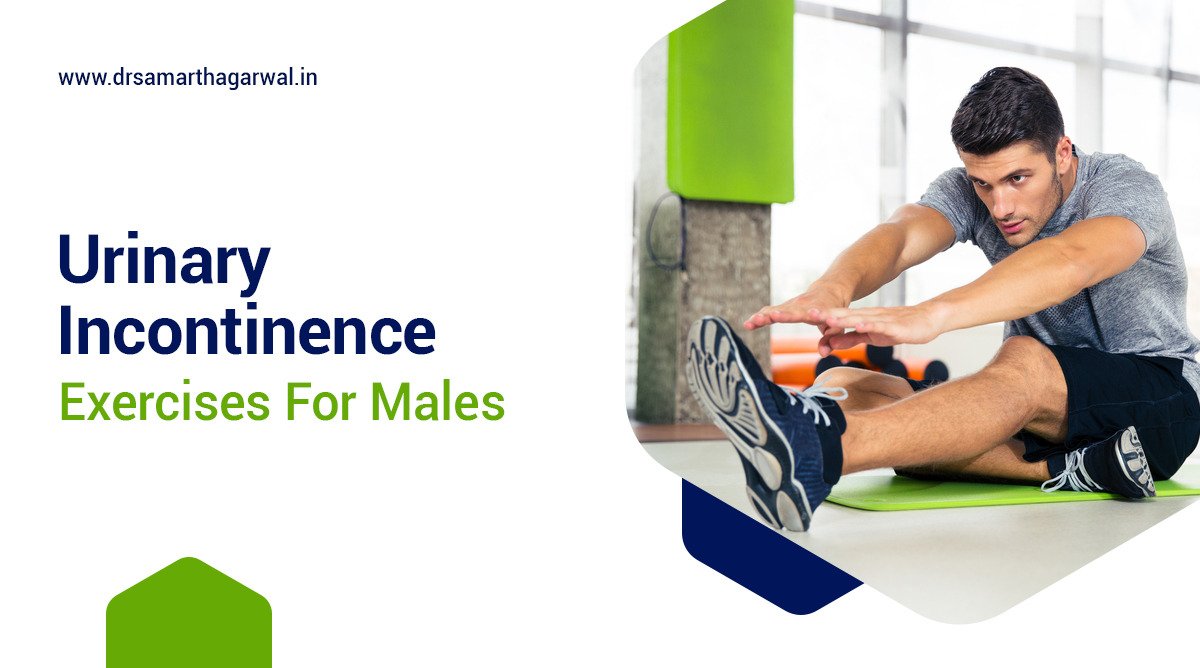Urinary incontinence exercises, also known as Kegel exercises, are a type of physical therapy that helps strengthen the pelvic floor muscles to improve bladder control and reduce the frequency of involuntary urine leakage. This therapy is particularly beneficial for males who experience urinary incontinence due to various reasons.
Urinary incontinence in males is a condition characterized by the involuntary leakage of urine, which can be caused by a variety of factors such as prostate surgery, neurological disorders, and age-related weakening of the pelvic floor muscles. According to a study published in the Journal of Urology, urinary incontinence affects approximately 10% of men over the age of 65, with the prevalence increasing with age.
Pelvic floor muscle training (PFMT) has been found to be effective in improving urinary incontinence after radical prostatectomy, according to an umbrella review of meta-analyses and systematic reviews by Yang, J.-M., Ye, H., Long, Y., Zhu, Q., Huang, H., Xie, H.-Y., Luo, Y., Zhong, Y.-B., Chen, J., & Wang, M.-Y. (2023).
What are the Urinary Incontinence Exercises for Males?
Kegel exercises for men can help improve bladder control, potentially enhance sexual performance, reduce the risk of prostate issues, and improve erectile function and orgasm sensation. To do Kegel exercises, identify the correct muscles, squeeze and hold for 5 seconds, release for 5 seconds, and repeat 10 times, 3 times a day. Consult a healthcare provider for guidance if needed.
Here are the Urinary Incontinence Exercises for Males:
- Kegel exercises: Identify the correct muscles by stopping the flow of urine midstream or imagining you are trying to stop passing gas. Squeeze and tighten the pelvic floor muscles for 5 seconds, then release for 5 seconds. Repeat this 10 times, 3 times a day.
- Biofeedback training: If you have trouble finding the correct muscles or have pain while doing Kegel exercises, consult a healthcare provider for biofeedback training to help you locate and strengthen the correct muscles.
- Pelvic floor muscle training: In addition to Kegel exercises, you can also do pelvic floor muscle training exercises such as wall sits, bridge lifts, and leg lifts to strengthen the muscles that support the bladder and improve bladder control.
- Bladder training: If you have urge incontinence, bladder training can help you gradually increase the time between bathroom visits and improve bladder control. This involves scheduling bathroom breaks and gradually extending the time between them.
How to exercise for urine leakage for men?
To manage urine leakage, men can perform Kegel exercises, which strengthen the pelvic floor muscles. Here’s a guide:
- Identify the correct muscles: To find the correct muscles, try stopping the flow of urine midstream, or imagine you are trying to stop passing gas. These muscles are the ones you should be exercising.
- Squeeze and hold: Squeeze and tighten the pelvic floor muscles for 5 seconds, then release for 5 seconds. Repeat this 10 times, 3 times a day.
- Maintain focus: Make sure to focus on tightening only the pelvic floor muscles, and avoid flexing the muscles in your abdomen, thighs, or buttocks.
- Practice regularly: Make Kegel exercises a part of your daily routine, and continue doing them to maintain the benefits.
Do male Kegel exercises really work?
Male Kegel exercises, also known as pelvic floor muscle training (PFMT), can be beneficial for various male genitourinary health issues, such as stress urinary incontinence that follows prostate surgery, overactive bladder etc.
Early pelvic floor muscle exercises (Kegel’s exercises) have been found to be effective in improving urinary continence and quality of life in patients who have undergone robotic prostatectomy, according to a study conducted by Chitre, A., & Kulkarni, J. N. (2023). Effect of early pelvic floor muscle exercises (Kegel’s exercises) after Robotic Prostatectomy in Prostate cancer patients. Journal of Robot Surgery, 17(3), 1065-1070.
How effective is Kegel exercise for men?
Kegel exercises have been found to be effective in preventing urinary incontinence in men undergoing radiotherapy for prostate cancer, according to a controlled clinical trial conducted by Urvaylıoğlu, A. E., Kutlutürkan, S., & Kılıç, D. (2021). Effect of Kegel exercises on the prevention of urinary and fecal incontinence in patients with prostate cancer undergoing radiotherapy.
How long do male Kegels take to work?
Results from male Kegel exercises, such as improved urinary continence, can be noticed within three to six weeks to a few months, depending on consistency.
Early pelvic floor muscle exercises (Kegels) can help improve urinary continence in prostate cancer patients after robotic prostatectomy, with 94.20% of patients regaining continence by 3 months post-surgery, according to a 2023 study by Chitre, A., & Kulkarni, J. N. (2023). Effect of early pelvic floor muscle exercises (Kegel’s) after Robotic Prostatectomy in Prostate cancer patients.
Benefits of Kegel Exercises
- Improve bladder control: Kegel exercises can help strengthen the pelvic floor muscles, which support the bladder and can help improve bladder control, reducing urinary incontinence.
- Possibly improve sexual performance: Kegel exercises can help improve sexual function by strengthening the muscles involved in sexual activity, potentially leading to better control and increased pleasure.
- Reduce the risk of prostate issues: Regular Kegel exercises can help prevent prostate issues such as prostatitis and benign prostatic hyperplasia (BPH) by improving blood flow to the area and reducing pressure on the prostate.
- Enhance erectile function: By strengthening the muscles that help with erections, Kegel exercises can potentially improve erectile function and help maintain an erection for longer periods.
- Improve orgasm sensation: Kegel exercises can help men achieve more intense orgasms by strengthening the muscles involved in ejaculation and orgasm.
What are the disadvantage of kegel exercise for men?
Kegel exercises can have several disadvantages for men, including muscle strain and fatigue, incorrect muscle engagement, potential harm, and ineffectiveness. It is not recommended for men with prostate cancer or those who have had prostate surgery, and can cause discomfort, pain, and imbalances in the pelvic floor muscles.
Consult a healthcare provider before starting Kegel exercises to ensure they are done correctly and safely.
- Overuse can lead to muscle strain and fatigue, causing the muscles to become tired and less effective.
- If not done correctly, Kegel exercises can lead to the involvement of the abdomen muscles, which can result in more harm than good.
- Using the wrong muscles can also lead to ineffectiveness of the exercise and potential harm.
- Kegel exercises are not recommended for men with prostate cancer or those who have had prostate surgery.
- In some cases, Kegel exercises can cause discomfort or pain in the pelvic area.
- If done excessively, Kegel exercises can lead to an imbalance in the pelvic floor muscles, causing problems such as urinary incontinence or fecal incontinence.
How do I find my pelvic floor muscles?
The first step in finding your pelvic floor muscles as a male is to identify the correct muscles. These muscles are responsible for supporting your bladder and bowel and can be strengthened through exercises. According to the Continence Foundation of Australia, you can find your pelvic floor muscles by stopping urination in midstream or tightening the muscles that keep you from passing gas. These maneuvers use your pelvic floor muscles. Once you’ve identified your pelvic floor muscles, you can do exercises in any position, although you might find it easiest to do them lying down at first.
To begin Kegel exercises, locate your pelvic floor muscles, which are the same ones used to halt your urine flow during urination. Avoid doing this frequently, as repeatedly stopping your urine stream can be detrimental.
In order to find your pelvic floor muscles, you can try the following:
- Stop urination in midstream: Try to stop urinating in midstream and hold for a few seconds. You should feel the muscles in your pelvic floor contracting.
- Tighten the muscles that keep you from passing gas: When you feel the urge to pass gas, try to tighten the muscles that keep you from passing gas. You should feel the muscles in your pelvic floor contracting.
Once you’ve identified your pelvic floor muscles, you can do Kegel exercises to strengthen them. Kegel exercises involve squeezing and lifting the muscles in your pelvic floor. You can do this by sitting, standing, or lying down, and it’s recommended to start with short holds and gradually increase the duration as you build strength.
It’s also important to practice good posture and maintain a healthy lifestyle to support the health of your pelvic floor muscles. Additionally, if you experience symptoms of urinary incontinence or other issues related to your pelvic floor muscles, you may want to consult with a healthcare provider or a physical therapist for further guidance and treatment.

Contact Dr. Samarth Agarwal if you have any questions or concerns about your Urinary health!






